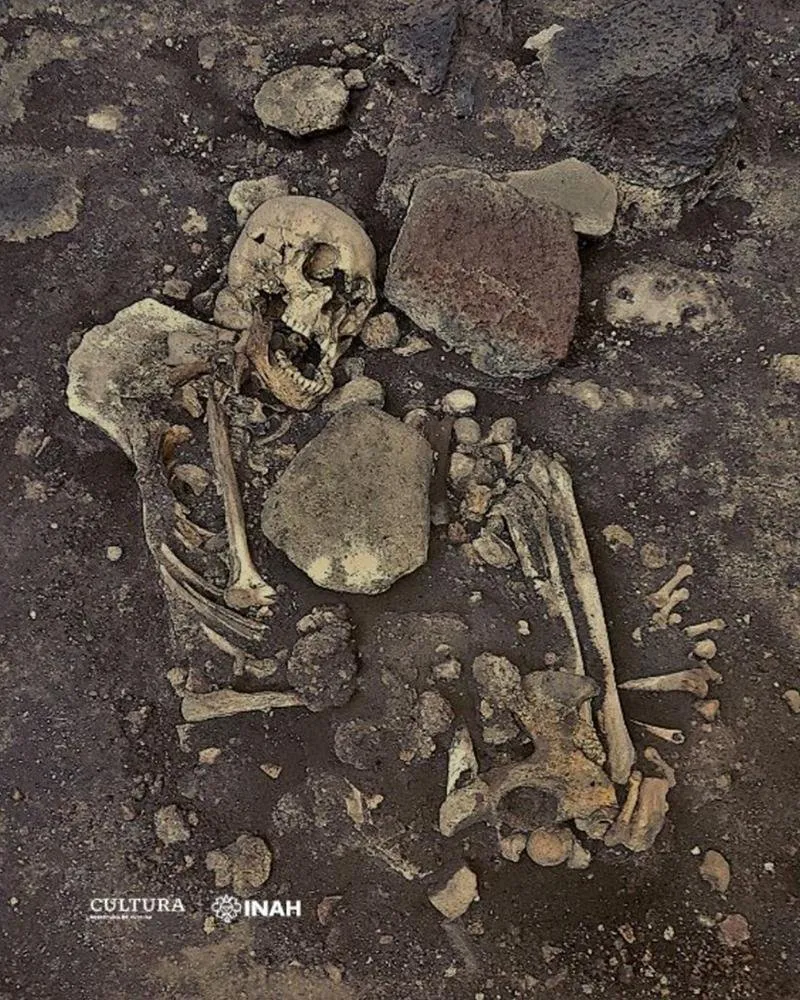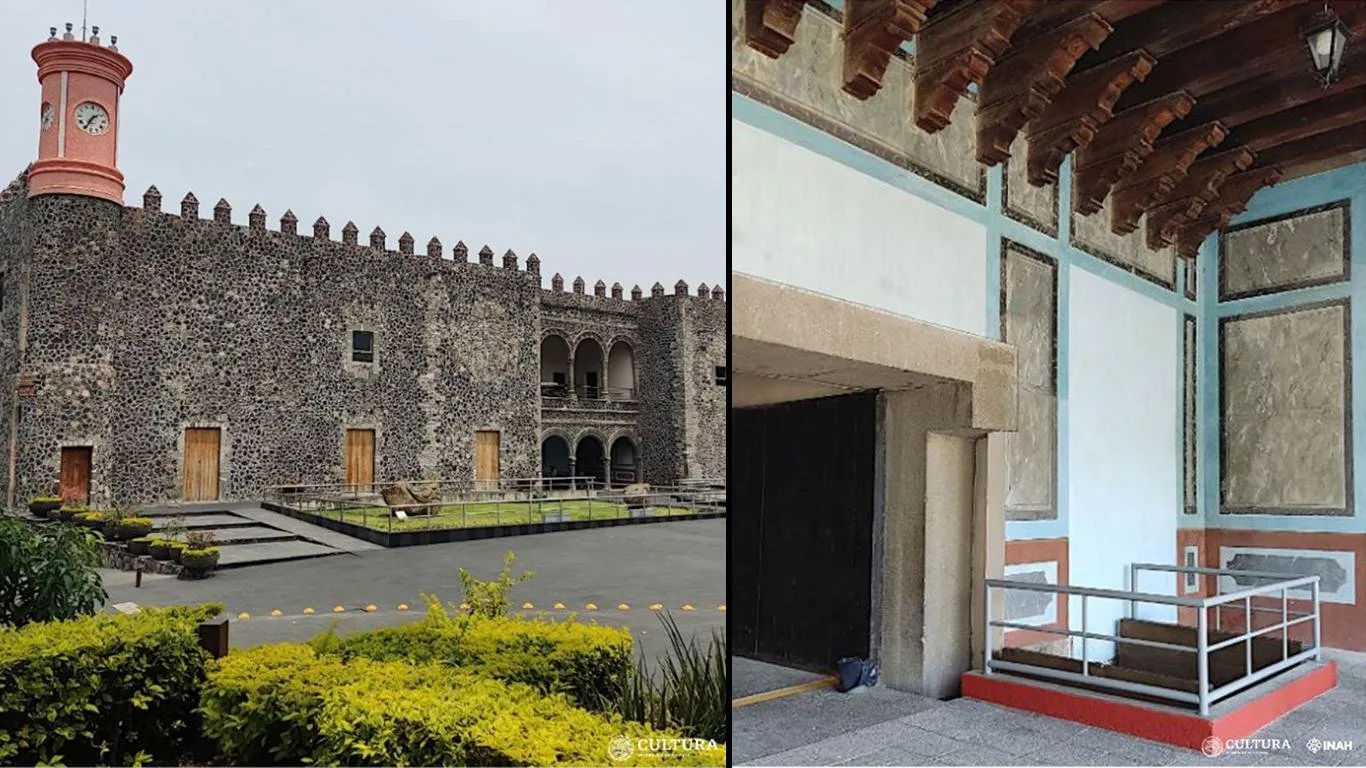New analysis reveals that the person buried in the Palace of Cortés was an Aztec woman, not a Spanish monk
Recent research at the Palacio de Cortés in Cuernavaca, Mexico, has dispelled a long-standing historical misconception about the identity of a skeleton displayed at the site. Initially believed to be the remains of a Spanish monk, the bones were instead identified as belonging to a middle-aged indigenous woman.

The burial of an Aztec woman that was found under the Palace of Cortés in Mexico. Credit: INAH
The burial, initially excavated in 1971, was thought to be that of Juan Leyva, a Spanish monk who served the Marchioness Juana de Zúñiga y Arellano, wife of Hernán Cortés. The identification was based on a 16th-century Franciscan codex that described Leyva’s burial next to the gate of the old house. However, discrepancies in skeletal features, such as the fetal-like burial position and cranial modification, raised doubts about this identification.
Mexico’s National Institute of Anthropology and History (INAH) recently announced the results of a new analysis conducted by anthropologists Pablo Neptalí Monterroso Rivas and Isabel Bertha Garza Gómez. Their examination challenged long-held belief and determined that the skeleton was, in fact, that of a Tlahuica woman, a member of the Aztec tribe.

Skeletal analysis revealed that the individual was a woman, aged between 30 and 40 years at the time of her death. The presence of cranial flattening, a fetal-like burial position, and other distinctive features suggested an indigenous origin. Researchers proposed that the woman was buried ritually, possibly as part of a series of events, such as sacrifices, around the time of the Spanish invasion between 1500 and 1521.

A more recent image of the skeleton. Credit: INAH
Jorge Angulo, an archaeologist at INAH, commented on the significance of the find, stating that “it is more closely related to a pre-Hispanic burial, which could belong to the contact period or earlier.” This challenges the previous belief that the burial belonged to a Spanish monk and highlights the importance of re-evaluating historical assumptions.

The study also uncovered additional bones from other individuals, including an infant and a child, raising suggestions of a possible family connection. To further clarify the relationships, the researchers recommended conducting a DNA study. Despite the challenges posed by the skeleton’s damaged state after years of exposure and moisture issues following the 2017 earthquake, the team expressed hope that further preservation efforts and studies would be possible.
The burial of the Tlahuica woman has special significance because of its association with the Palace of Cortés, the palace built by the Spanish in the 1520s on the ruins of the Aztec city of Cuauhnáhuac. The reopened archaeological window, now updated with a plaque declaring the burial to be that of a “Tlahuica Woman,” serves as a poignant reminder of the complex history inherent to the site.
 Left) The Palace of Cortés in Mexico. Right) The archaeological window, visible in this image, was reopened with a new certificate, which states that the burial belonged to a Tlahuica woman. Credit: INAH
Left) The Palace of Cortés in Mexico. Right) The archaeological window, visible in this image, was reopened with a new certificate, which states that the burial belonged to a Tlahuica woman. Credit: INAH
As physical anthropologists Monterroso Rivas and Garza Gómez emphasized in their report, “It is worth reiterating the importance of the burial and its emblematic association with the palace.”






